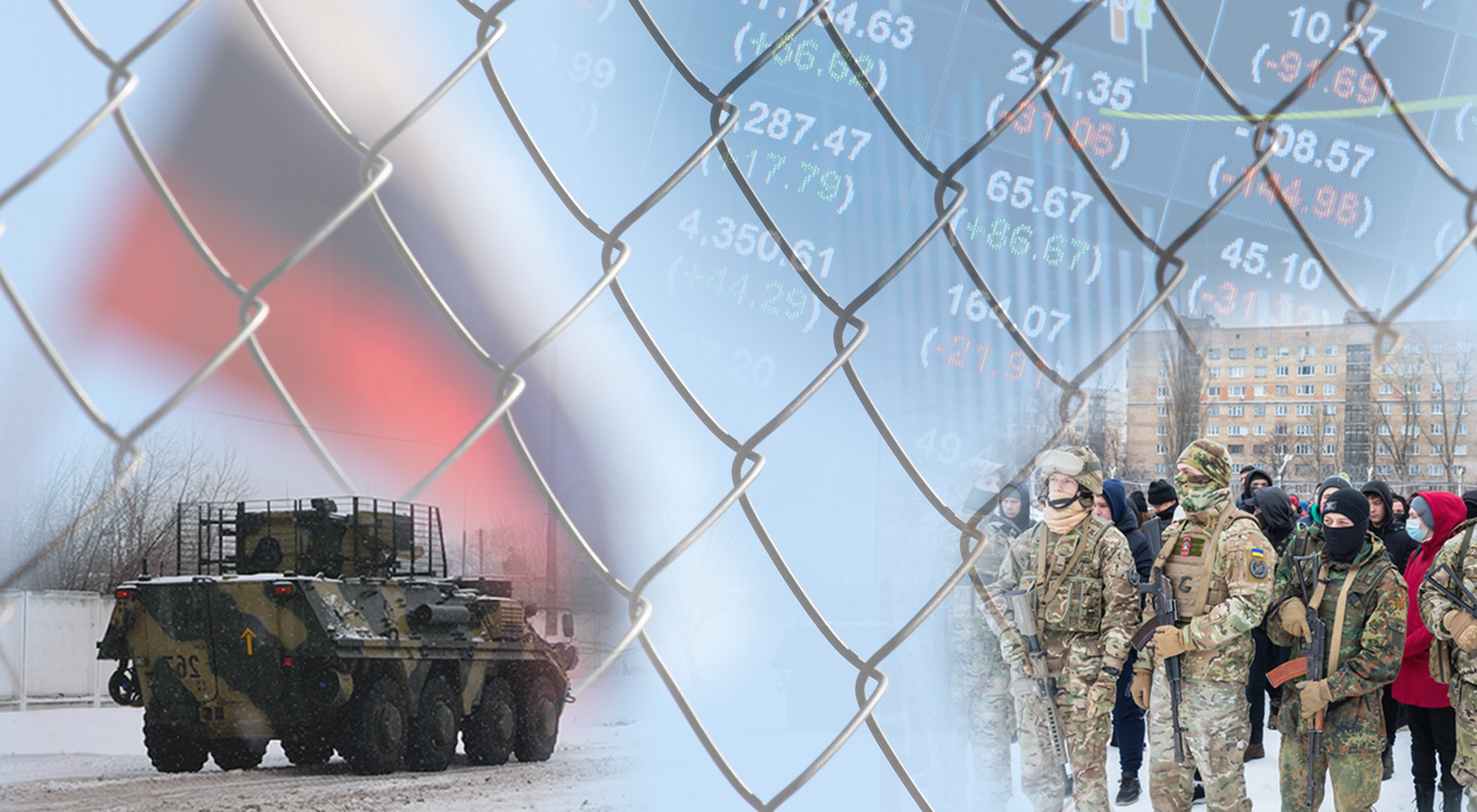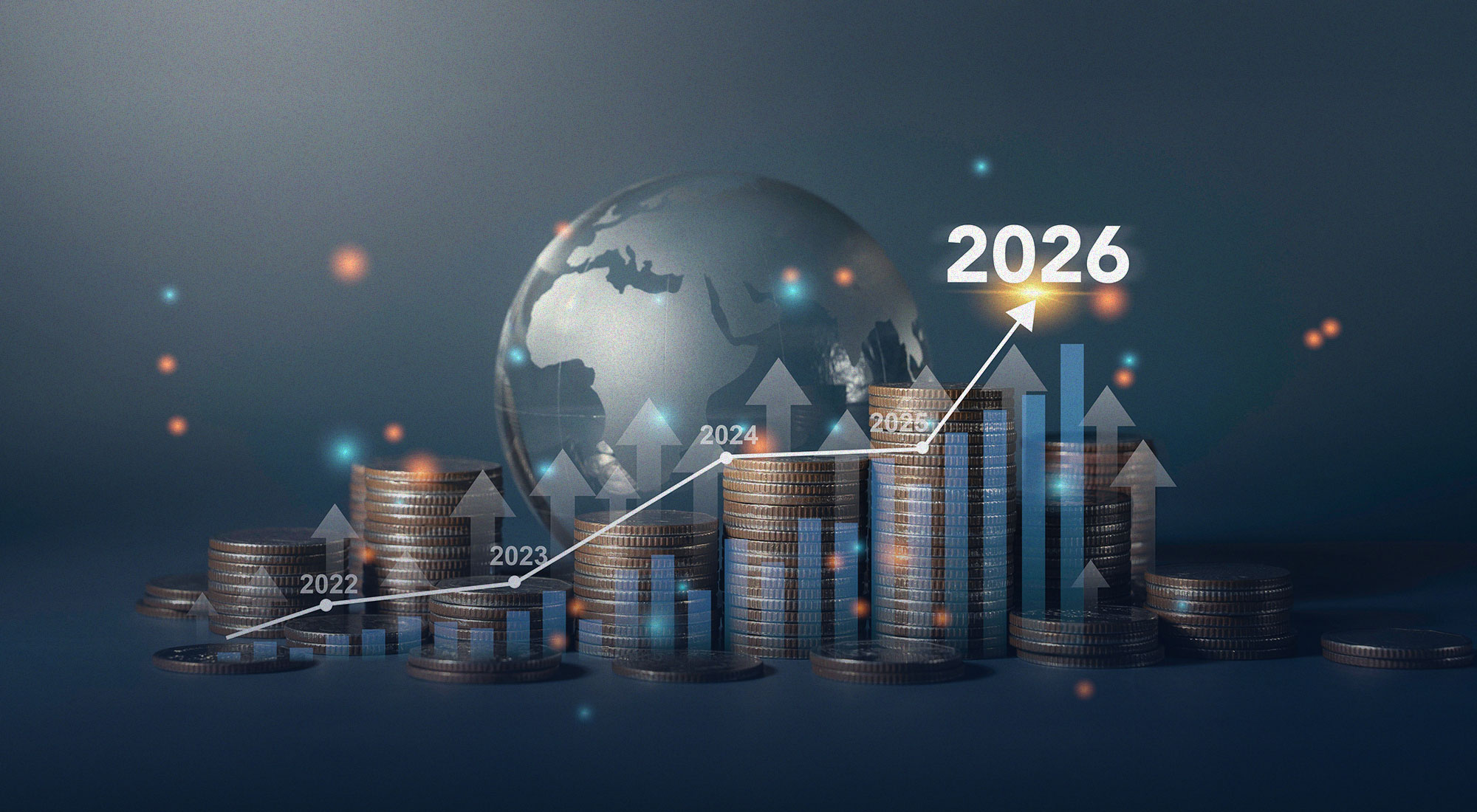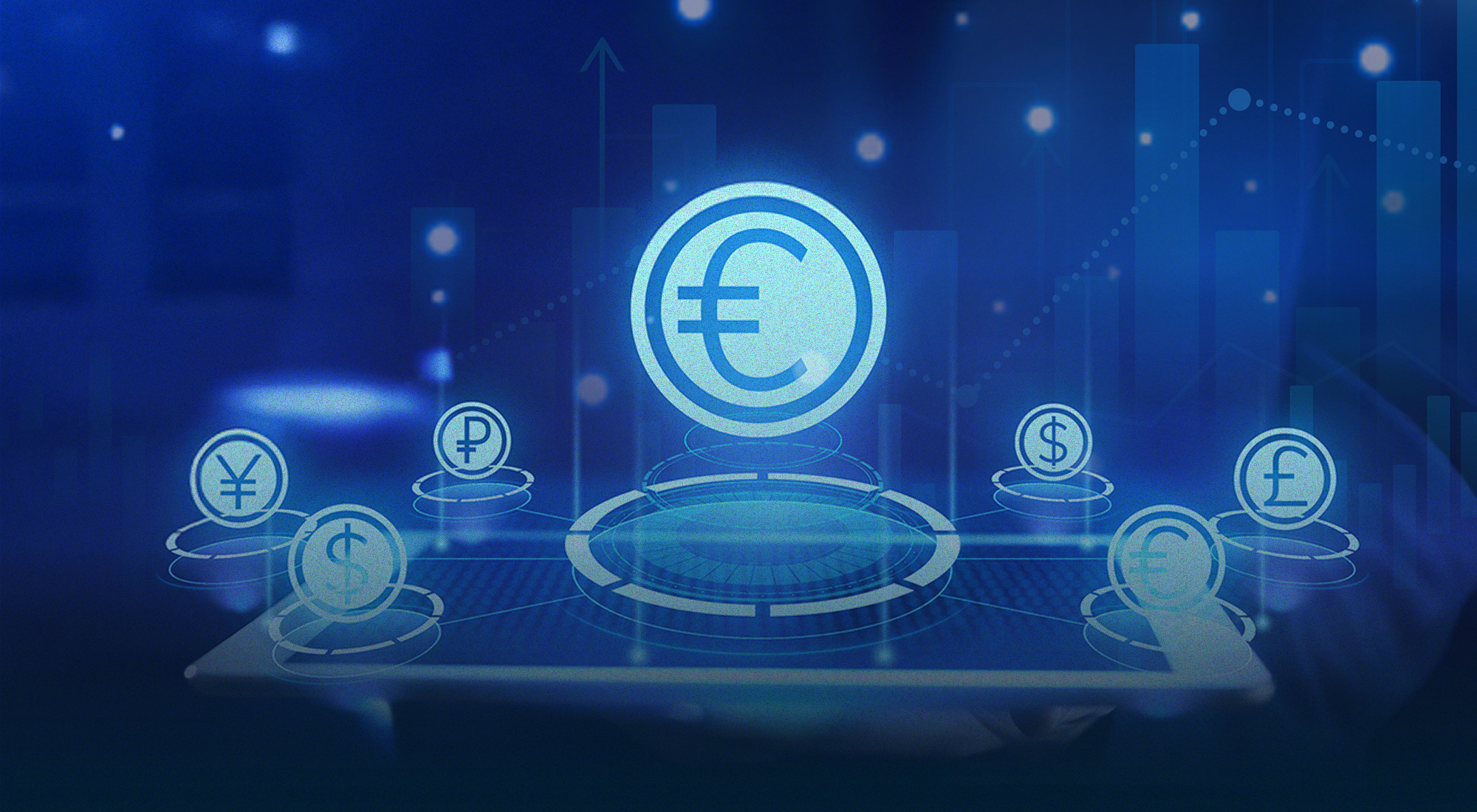Russia’s recognition of the Donetsk and Lugansk People’s Republics (DLPR) on 21 February 2022, and subsequent military operation into the territory of Ukraine, triggered an unprecedented negative global response. On 23 February, the EU Council agreed on a first package of sanctions followed by additional restrictive measures announced on 25 and 28 February.[1] In close alignment with allies in the EU and UK, the US and Japan also imposed economic measures targeting the internal Russian financial system.[2]
Key economic aspects of the measures include barring certain Russian banks from the SWIFT (Society for Worldwide Interbank Financial Telecommunications) international payments system, freezing the assets of the Bank of Russia, implementing personal sanctions against members of the Russian political leadership, limiting the sale of citizenship to individuals connected to the Russian government, as well as imposing further restrictive measures on the financial sector, energy and transport sectors, dual-use goods, export control and export financing, and visa policy.[3] As set out in the table below, the restrictive economic measures have enjoyed broad support among Western allies, and unlike the relatively narrow economic sanctions on Russia after the annexation of Crimea in 2014, the current sanctions packages are designed to impose considerable costs on the broader Russian economy and financial system. While the cost of the post-2014 sanctions to Russia is estimated to amount to around 50 billion USD, current sanctions are expected to impact not only the Russian economy in serious and fundamental ways, but also the global economy, interdependent energy markets, and the international financial markets.
Table 1: Distribution of Economic Measures Imposed on Russia, 3 March 2022 [4]

Russia
The military operation in Ukraine, and announcement of economic sanctions, caused an immediate market reaction resulting in a 20% devaluation of the ruble and a drop in the Moscow stock market of 33%. Russian companies listed on foreign exchanges registered severe losses, with London-listed Sberbank shares falling by almost 70% and key gas supplier Gazprom dropping by 37%. The reaction from Western investors in Russia has also been immediate, with British Petroleum (BP) abandoning its 20% shareholding in Rosneft (Russia’s top oil producer), Shell exiting joint projects with Gazprom and Gazprom Neft, and other corporates cutting ties with Russia.
The barring of certain Russian banks from the Belgium-based SWIFT international payments system will effectively prevent the settlement of transactions in US dollars for the affected banks. While these include Russia’s second largest financial bank VTB and six smaller banks, Russia’s largest bank Sberbank and the key energy player Gazprombank have not as yet been included.[5] Carve-outs are provided for energy payments, thereby allowing oil, gas and other energy transactions to continue so as to avoid energy supply shocks. Further implementing details are expected to protect transactions involving agriculture, food and possibly other sectors.
Globally, the impact of the current partial removal of Russian banks from SWIFT – or even a future total block of all Russian banks from the transaction system – will be negligible. As set out in Chart 1 below, the December 2021 share of SWIFT payments taking place in rubles amounted to a mere 0.21% of the world total.
Chart 1: Share of SWIFT Global Payments by Currency, December 2021 [6]

The asset freeze on Russia’s central bank is potentially more damaging than the partial SWIFT ban, insofar as the asset freeze prevents the Bank of Russia from using approximately half of its $630 billion international dollar reserves (accounting for 38% of 2021 GDP) to support the ruble.[7] The currency has already declined by around 20%, forcing the Bank of Russia to double its interest rate to 20% to make the ruble more attractive to investors and halt the currency’s decline.
These severe economic costs are manageable in the very near term due to Russia’s ability to use its large accumulated surpluses and revenues from sales of crude oil to offset some of the costs imposed by the restrictive measures. While on 9 March the US and UK jointly banned Russian energy exports from their respective countries, the EU and other allies have not as yet taken a similar step, thereby continuing to finance Russia’s energy trade. Moreover, since the Crimea annexation in 2014, Russia has taken steps and implemented policies to strengthen its economy against external shocks. At a fiscal level, the Russian budget is required to balance at the relatively low oil price of $40/barrel. In terms of alternatives to the SWIFT system for financial transactions, Russia has established a domestic system called SPFS (System for Transfer of Financial Messages), which is already operational within the country.
Over the course of this year, the sanctions are certain to increasingly damage Russian economic growth. If economic sanctions are strengthened further to involve the energy sector or if all Russian banks and major corporates are cut out of SWIFT instead of a selected few, Russian oil and gas exports (currently accounting for $240 billion or 15% of annual GDP) could fall sharply and prompt a decline in GDP of up to five percent, in combination with other economic sectors as depicted in Chart 2 below. Since Russia earns four times more from crude oil exports than from gas exports, any western sanction affecting crude oil exports would be highly disadvantageous for the Russian economy.
Chart 2: Estimated Impact of Western Trade Sanctions (Including Energy) on Russian 2022 GDP [8]

However, the current strength of crude oil markets, with crude oil reaching almost $140 a barrel on 8 March 2022, will ensure Russian oil exports contribute considerably to government revenues, potentially offsetting the economic impact of sanctions and other measures. Furthermore, China is expected to strongly support the Russian economy in terms of expanded imports, particularly with China’s recent agreement to purchase an additional 10 billion cubic meters of gas from Russian gas company Gazprom.[9]
Despite these supportive factors, the combined impact of the broad restrictive measures could potentially reduce Russia’s 2022 GDP by 2-3%. Given that the World Bank growth forecast for the Russian economy in 2022 and 2023 is 2.4% and 1.8% respectively, a recession is likely to develop in Russia by next year.
The ongoing performance of the Russian stock market is also a concern. On top of the immediate drop in the Russian stock market of over 30%, further declines of another 10–20% remain possible. As shown in Chart 3, major Russian companies Gazprom, Sberbank and others listed in overseas markets have suffered serious market losses. Whether they will be able to recover to pre-war market levels will be determined largely by whether market confidence will return to support companies, which in turn will be dependent on how the Russia-Ukraine war progresses.
Chart 3: Market Price of Major Russian Companies on Global Stock Exchanges, 28 February 2022 [10]

Euro-zone
The disruptive effects of the Russia-Ukraine war and sanctions against Russia are amplified by Europe’s proximity to the conflict and its dependence on energy exports from Russia. The immediate market reaction to the crisis saw European stock indices drop, with FTSE 100, France’s CAC 40 and Germany’s DAX 30 registering losses of around 5%.
As Europe imports around 40% of its natural gas supply from Russia, rising prices remain the major channel through which economic impact in the euro zone will be felt. European gas prices have already spiked by over 50% since the beginning of the crisis. Despite the narrow focus of the SWIFT ban on Russian banks, the high exposure to Russian energy supplies has left European markets with no choice but to price in the risk of future disruptions to energy flows.[11] Among euro-zone countries, Germany remains particularly exposed as it imports approximately 50% of its natural gas, 45% of its coal and 35% of its oil from Russia. Moreover, nuclear power is undergoing a phase-out in Germany, so the country has been increasingly reliant on Russia for its energy needs. European dependence on Russian energy is starkly clear in Chart 4 below, with Russian natural gas and crude oil exports accounting for 41% and 27% of EU imports respectively in 2019.
Chart 4: Extra – EU Energy Imports (Solid Fuels, Natural Gas and Crude Oil)

Banking exposure to Russia is also significant, with European lenders accounting for a large portion of the $121 billion owed by Russia to foreign banks. At the consumer level, rising road transport fuel (petrol and diesel) costs and heating bills risk squeezing European household incomes, thus reducing expenditure on goods and services. Additionally, inflation is expected to increase as a result of the passthrough from energy prices to consumer prices. Although Europe is facing record levels of inflation, with 5.8% reported in February, the economic uncertainty surrounding the crisis will likely force the European Central Bank to postpone its anticipated rate increase and maintain a looser fiscal policy until late 2022 or early 2023. Despite a presumed continuation of accommodative fiscal policy, higher energy prices coupled with lower business confidence and investment from declining or volatile stock markets suggest that an impact of 0.5-1.0% on euro-zone economic growth is likely this year.
MENA region
The economic effects of the Russia–Ukraine crisis on the Middle East will largely revolve around commodity prices and supply chains, with higher prices benefiting oil producing nations. On 1 March, the US and other major energy consumers agreed to release 60 million barrels of oil from their emergency reserves to balance the markets, given the steep price rise in crude since the Russia-Ukraine war started. However, any escalation of the crisis would likely trigger retaliatory actions leading to a longer-term economic war involving Russia and the West. Brent crude is already trading in the range of $100–$105 per barrel; any scenario leading to Russia cutting oil supplies significantly would most likely see brent reach $120–$140 per barrel. Under such a scenario, OPEC would come under substantial pressure to increase output and balance crude markets.
Aluminum markets have also been affected by the Russia–Ukraine crisis, in light of Russia’s exports of aluminum accounting for 4% of global output of the metal. The effect of sanctions on Russia’s ability to continue providing aluminum to global markets caused the price to increase by approximately 12% in February. In this regard, aluminum producers based in the GCC region including Emirates Global Aluminum (EGA) and ALBA of Bahrain will benefit from higher prices.
The crisis is also significant in terms of agricultural commodity exports to the Middle East. Russia and Ukraine together account for between 25-30% of global wheat exports, with much of that volume imported across the MENA region. Egypt, for example, relies on Ukraine and Russia for almost 70% of its wheat imports. Tunisia, Lebanon, Sudan and Yemen also carry considerable exposure to wheat imports and will be affected by shortages and high wheat prices expected to continue throughout 2022. In combination with higher energy prices, the passthrough of higher bread prices to consumer prices will add to price inflation across the Middle East, squeezing household incomes particularly in non-oil producing countries. Increases in the price of bread, together with other economic pressures, are known to contribute to high levels of societal dissatisfaction. In countries with low savings rates, reduced expenditure on goods and services will additionally have a negative impact on overall consumption, leading to reduced economic growth over time.
United States and United Kingdom
After the invasion of Crimea in 2014, the US and UK gradually reduced trade in energy, goods and services with Russia, and as a result currently have limited direct trade and financial exposure to the Russia–Ukraine conflict, although considerable direct investment exposure for the US remains (Chart 5). While direct US consumption of Russian oil is very limited at around 90,000 barrels per day, rising oil prices and potential energy supply shocks caused by the Russia–Ukraine war will impact global energy markets and have a knock-on effect on the US, UK, and other economies. As is the case with Europe, high energy prices aggravate existing inflation; petrol prices in the US are currently very high at over $3.80 per gallon.
A major shift in European gas supply may have been accelerated as a consequence of the Russia-Ukraine war. The advent of the conflict in combination with the exorbitant gas prices in Europe this winter could potentially reduce long-term reliance on Russian gas supplies, realigning the supply dynamic in favor of US gas producers. In February 2022, for the first time, US exports of liquified natural gas (LNG) exceeded gas delivered to Europe by pipeline.[12] The market shift towards imported US gas was driven by the extremely high prices for gas delivered by pipeline to Europe, but serious political concerns about continued Russian gas supply are likely to add to the momentum behind the shift away from reliance on Russian gas.
Business ties with sanctioned Russian individuals or companies have now become a considerable business risk, and firms in UK and US financial centers are in the process of ensuring business links with sanctioned individuals are phased out. Lending exposure in the US and UK remains significant, however, and if the SWIFT block is broadened to include a greater number of Russian banks, creditors in the US and UK will find considerable difficulty in recovering payments.
Chart 5: Direct Investment Position of the US in Russia from 2000 to 2020 (US$ billions) [13]

A certain level of economic vulnerability exists at the industry level in that many of the metals used in US and UK industries are sourced from Russia. Many of the metals necessary to the microchip industry (mainly neon, palladium, and platinum) are imported from Russia, and the shortage resulting from sanctions is expected to result in higher prices for many appliances as well as vehicles, in turn exerting upwards pressure on inflation. Aerospace industries in the US and UK also depend to a significant extent on titanium sourced from Russia; Boeing and Airbus are understood to already be in the process of developing alternative suppliers.
Amid surging energy prices, inflation worries, and uncertainty regarding the development of the Russia–Ukraine war, the Dow Jones, Nasdaq and FTSE exchanges remain muted. After the invasion of Kuwait in 1990, global stock markets dropped by 20-25% and only rebounded once the US mobilized forces to bring the war to an end. Taking into account the various possible scenarios for the Russia-Ukraine crisis and the response of central banks, a further decrease of another 10-15% in current levels of global stocks is possible. As is the case with the European Central Bank, the global uncertainty generated by the Russia–Ukraine war may prompt the US Fed and Bank of England to delay monetary policy tightening. Should the Russia–Ukraine crisis continue to escalate and involve energy supply to a greater extent, the impact of global inflation could add 1–2 % to existing record inflation levels and substantially impact GDP growth globally.
Looking beyond near-term economic growth, in the event that the Russia–Ukraine war escalates and results in a strengthening of the existing economic measures, initiatives by Russia and China to develop an alternative to the dollar-denominated global financial system are likely to accelerate.
China and India
China and Russia have an established history of economic co-operation regardless of changes to the external environment, and western sanctions will further push Russia towards closer economic and commercial cooperation with China. Chart 6 below shows a clear trend over the last 20 years of Russian imports from China increasing strongly, while imports from Germany decline and those from the US remain stable. Significant trade flows of commodities and goods affected by sanctions will almost certainly be diverted towards China to be settled in domestic currency. Furthermore, the removal of Russian banks from the SWIFT system will also likely promote financial integration between Russia and China, with the countries choosing to accelerate the integration of the Russian SPFS with the Chinese CIPS (Cross-Border Interbank Payment System) payment systems. This scenario together with the stability demonstrated by the Chinese currency and its backing by a significant trade surplus could eventually support the emergence of the currency as a global currency for international trade and foreign exchange reserves.
Chart 6: Share of Russian Imports from China, Germany and the US

The destabilizing effects of the conflict on the global economy could of course also affect China through higher energy and commodity prices, financial market instability and rising inflation. In common with other major global financial indices, China’s Shanghai Composite Index has stalled due to market uncertainty. Sustained increases in crude oil prices will also over time exert downward pressure on Chinese economic growth.
India is another major trading partner of Russia, with substantial reliance on fertilizer and other exports. While carefully avoiding transactions raising potential sanctions concerns, India could consider settling other bilateral trade transactions in rupees in order to minimize the impact of Russia’s exclusion from SWIFT on Russia–India trade flows.[14] Under similar circumstances with Iran in 2018, India adopted the mechanism of trade settlement in non-dollar accounts through UCO Bank. India’s economic choices and actions in the context of the Russia–Ukraine war will also be influenced by its relationship with Russia as one of India’s largest defense suppliers and direct investors in India’s domestic defense sector.
ASEAN
With the exception of Singapore, which announced sanctions against four Russian banks and implemented an export ban on electronics on 5 March 2022,[15] the response of ASEAN countries to Russia’s military operation in Ukraine has been far less vocal than that of its western counterparts to date, and few are expected to impose economic sanctions or other restrictive measures on Russia. The Russian Ministry of Economy has announced that it will seek to expand ties with Asia to offset the effects of western sanctions.
ASEAN economies are not of course isolated from the global economic effects of the crisis. Many regional economies are net oil importers with energy and food equating to a high share of total consumption-related expenditures. As a result, global increases in energy and food prices will have negative effects on economies through higher inflation and reduced economic growth.
Conclusion
The magnitude of the economic effects of the Russia–Ukraine war will ultimately depend on the nature of the conflict and its duration. Above all, an extension of western sanctions to include energy flows (as well as the possibility of retaliatory Russian action intended to cause a supply shock in energy markets) would constitute a dramatic escalation in relation to the economic effects outlined above. What will likely remain unchanged among the various possible scenarios is the increasing economic and commercial cooperation between Russia and China, and commensurate distancing of Russia from Western powers.
References
[1] Council of the European Union. (2022, February 28). Timeline – EU restrictive measures in response to the crisis in Ukraine. https://www.consilium.europa.eu/en/policies/sanctions/restrictive-measures-ukraine-crisis/history-ukraine-crisis/
[2] U.S. Treasury Press Release. (2022, February 24). U.S. Treasury Announces Unprecedented & Expansive Sanctions Against Russia, Imposing Swift and Severe Economic Costs. https://home.treasury.gov/news/press-releases/jy0608
[3] European Commission Press Release. (2022, February 26). Joint Statement on further restrictive economic measures. https://ec.europa.eu/commission/presscorner/detail/en/statement_22_1423
[4] Source: The Economist, Wall Street Journal, and Reuters
[5] Kowsmann, P., Norman, L., & Talley, I. (2022, March 1).West Orders Seven Russian Banks Off Swift, But Leaves Others On. The Wall Street Journal. https://www.wsj.com/livecoverage/russia-ukraine-latest-news-2022-03-01/card/west-orders-seven-russian-banks-off-swift-but-leaves-others-on-OMv9TCsZMQqlze9dQQR
[6] Source: SWIFT payments system
[7] European Commission. (2022, February 26). Statement by President von der Leyen on further measures to react to Russia’s invasion of Ukraine. https://ec.europa.eu/commission/presscorner/detail/en/STATEMENT_22_1422
[8] Kiel Institute for World Economy. (2022, February 2022). With these sanctions, the West hits Russia’s economy the hardest. https://www.ifw-kiel.de/publications/media-information/2022/with-these-sanctions-the-west-hits-russias-economy-the-hardest/
[9] Source: Moscow Stock Exchange, NASDAQ, OTC Markets
[10] Aizhu, C. (2022, February 4). Russia, China agree 30-year gas deal via new pipeline, to settle in euros. Reuters, https://www.reuters.com/world/asia-pacific/exclusive-russia-china-agree-30-year-gas-deal-using-new-pipeline-source-2022-02-04/
[11] Melvin, J., and Gordon, M. (2022, February 27). Risks to energy trades grow as West commits to Russia SWIFT ban, Central Bank sanctions. S&P Global Platts. https://www.spglobal.com/platts/en/market-insights/latest-news/natural-gas/022722-risks-to-energy-trades-grow-as-west-commits-to-russia-swift-ban-central-bank-sanctions
[12] Yergin, D. (2022, February 14). America Takes Pole Position on Oil and Gas. Wall Street Journal. https://www.wsj.com/articles/america-oil-and-gas-russia-lng-exports-natural-gas-producer-rising-price-ukraine-uae-saudi-arabia-europe-energy-crisis-11644872477
[13] Source: Bureau of Economic Analysis, https://www.bea.gov/news/2021/direct-investment-country-and-industry-2020
[14] Jadhav, R., Anand, N., & Ahmed, A. (2022, February 25). India explores setting up rupee trade accounts with Russia to soften sanctions blow – sources. Reuters. https://www.reuters.com/world/india/india-explores-setting-up-rupee-trade-accounts-with-russia-soften-sanctions-blow-2022-02-25/
[15] Lin, C. and Daga, A. (2022, March 5). Singapore sanctions Russia over ‘unprovoked attack’ on Ukraine. Reuters. https://www.reuters.com/world/asia-pacific/singapore-sanctions-russia-over-unprovoked-attack-ukraine-2022-03-05/








